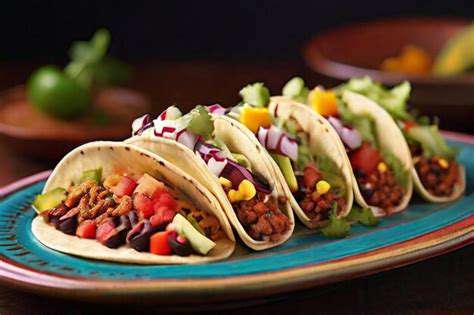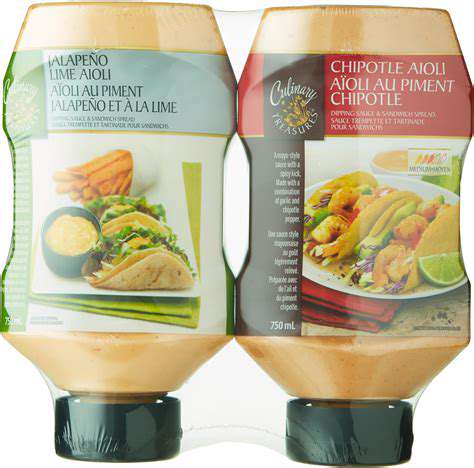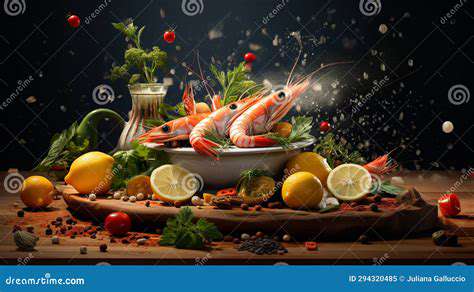The History of the Taco
Early Mesoamerican Origins
The journey of the taco, a beloved culinary staple across the globe, begins in the fertile valleys of Mesoamerica. Centuries before the Spanish conquest, indigenous peoples developed a rich and diverse array of culinary techniques, and the foundation of the taco's precursor was firmly laid. Corn, a staple crop, was meticulously cultivated and transformed into a variety of dishes, including those that would eventually evolve into the taco. The understanding of preparing and consuming food in this region, involving tortillas, fillings, and various methods of wrapping, provided a crucial platform for the development of this iconic dish.
While the exact recipe and presentation might have differed from the modern iteration, the fundamental principles of wrapping ingredients in a tortilla were already present. The use of corn tortillas, a cornerstone of Mesoamerican cuisine, as a vessel for various proteins, vegetables, and spices shows an understanding of food preparation that mirrored the future development of the taco. These early forms of tacos highlight the profound culinary ingenuity of the indigenous people and their profound connection with the land.
The Arrival of the Spanish and Cultural Exchange
The Spanish conquest in the 16th century brought about significant cultural exchange, impacting culinary practices in Mesoamerica. The introduction of new ingredients and cooking methods, combined with the existing knowledge of the indigenous people, led to a transformation of the culinary landscape. The Spanish, while bringing their own traditions, were undoubtedly influenced by the indigenous techniques of food preparation and presentation, a process that contributed to the eventual evolution of the taco as we know it. This merging of cultures resulted in the adaptation of corn tortillas to accommodate new ingredients and flavors.
The interaction between the Spanish and indigenous communities created a unique culinary environment. Indigenous methods of preparing and consuming food, combined with Spanish influences, fostered the creation of new dishes. This fusion of culinary traditions wasn't a simple imposition but rather a dynamic process of adaptation and creation that ultimately shaped the future of Mexican cuisine, including the taco.
The Taco's Evolution into a Global Phenomenon
From its humble beginnings in Mesoamerica, the taco's journey has been one of continuous adaptation and innovation. The taco's adaptability to different ingredients, flavors, and preparations has allowed it to flourish across various regions and communities. From the humble street vendors of Mexico to the upscale restaurants of the world, the taco has proven its resilience and versatility. The taco's global appeal can be directly attributed to its simple yet satisfying nature, allowing for diverse fillings and preparations, and its accessibility to various communities and cultures.
The taco's journey demonstrates the remarkable ability of food to transcend borders and cultures. Its evolution from a simple wrapping of ingredients in a tortilla to a global culinary phenomenon showcases the power of cultural exchange and the resilience of culinary traditions. The taco's continued popularity speaks to its ability to adapt and evolve while retaining its core essence.
The Spanish Conquest and the Evolution of the Taco
Early Influences and Indigenous Roots
The story of the taco, a beloved culinary staple across the globe, is deeply intertwined with the history of the Americas. Before the arrival of the Spanish conquistadors, various indigenous cultures in Mexico developed a rich tradition of preparing and consuming food wrapped in corn tortillas. These early iterations, while not exactly resembling the modern taco, laid the foundation for the dish we know and love today. The use of corn as a primary ingredient, a staple in the Mesoamerican diet, is a testament to the enduring connection between the taco and its indigenous origins. This foundational practice provided the blueprint for future culinary innovations.
The Spanish Conquest and the Introduction of Cattle
The Spanish conquest of Mexico in the 16th century brought about significant changes to the region's culinary landscape. The introduction of cattle, previously unknown in Mesoamerica, revolutionized the availability of protein sources. This shift in the food supply allowed for the development of new dishes incorporating beef, pork, and other meats. The existing tradition of wrapping food in tortillas naturally adapted to this new availability, laying the groundwork for the evolution of the taco as we know it. This melding of indigenous traditions with the influx of Spanish culinary practices marked a crucial turning point in the history of the taco.
The Rise of the Street Food Taco
As the Spanish colonial period progressed, the taco transitioned from a relatively niche dish to a more widely consumed street food. The convenience and affordability of the taco made it an ideal choice for working-class individuals and travelers alike. The simplicity of its preparation and the diverse range of fillings that could be incorporated, from simple meats to beans and vegetables, made it incredibly versatile and accessible. This evolution from a home-cooked meal to a popular street food item fundamentally shaped the taco's role in Mexican society and its eventual global appeal.
Regional Variations and Culinary Innovation
The taco, as a culinary staple, didn't remain static. Different regions of Mexico developed their own unique variations, showcasing the diverse culinary traditions of the country. From the al pastor tacos of Mexico City, with their distinctive marinated pork, to the more substantial and often vegetarian options found in other regions, the taco's adaptability ensured its continued popularity. This regional diversification is a testament to the taco's ability to embrace local flavors and ingredients, creating a tapestry of culinary experiences.
The Taco's Journey to Global Popularity
In the 20th century, the taco began to transcend its regional roots and gain global recognition. Mexican immigration to the United States, particularly during the mid-20th century, played a significant role in spreading the taco's popularity. The taco's affordability, deliciousness, and versatility made it a readily adoptable dish in various cultures and cuisines, attracting a global following. From casual street food stalls to upscale restaurants, the taco's versatility and adaptability have allowed it to adapt and thrive in diverse culinary landscapes.
Modern Interpretations and the Taco's Future
Today, the taco continues to evolve, with chefs and food enthusiasts pushing the boundaries of culinary creativity. From innovative fillings to unique preparations, the taco reflects a continuous process of adaptation and innovation. The taco's adaptability is a testament to its enduring appeal and its ability to remain relevant in a constantly evolving culinary landscape. The taco's future is bright, promising continued evolution and exploration, ensuring that its legacy as a global culinary icon continues for generations to come.
The relentless pursuit of smaller, more discreet implanted devices is a driving force behind many recent advancements. Miniaturization allows for greater patient comfort, significantly reducing the visibility and impact of the implant. This translates into improved cosmetic outcomes, especially for devices placed in visible areas like the chest or face. Engineers are continually exploring novel materials and fabrication techniques to achieve ever-smaller dimensions while maintaining the device's structural integrity and functionality.

Read more about The History of the Taco
Hot Recommendations
- Traditional Foods for Day of the Dead
- Food Etiquette in Italy: Pasta Rules!
- Best Family Friendly Restaurants with Play Areas in [City]
- Review: The Best [Specific Dessert] Place in [City]
- Top Ice Cream Parlors in [City]
- Traditional Foods for Halloween
- The History of the Potato in Ireland
- Best Vegan Pizza Joints in [City] [2025]
- Best Bakeries for Sourdough Bread in [City]
- Food Culture in Argentina: Asado and Wine
![Best Mexican Restaurants in [City]](/static/images/28/2025-05/FineDiningMeetsMexicanFlair3AAnElevatedCulinaryExperience.jpg)

![Review: [Specific type of cafe, e.g., Cat Cafe] in [City] A Fun Experience?](/static/images/28/2025-05/IsitWorththeVisit3FAFinalVerdict.jpg)

![Review: The Best [Cuisine] Outside [Country of Origin]](/static/images/28/2025-05/BeyondtheMainstream3ADiscoveringHiddenGems.jpg)




